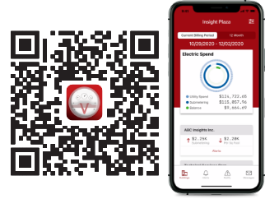Building Drift 101
Learn how to identify and manage the main contributors that cause meandering performance in your equipment and controls.
Building drift: Chances are you’ve heard of it. You’ve definitely experienced it. But what is it? And how big of a problem is it? Let’s wade in.
What is building drift?
Building drift occurs when the building operation systems deviate from operating the way they were initially designed. The result is a less efficient system – one that uses more energy, has higher maintenance costs and capital expenses due to greater wear and tear, and gets more complaints about tenant comfort. Over time, these small deviations in performance, often 1%–2% a year, can add up to significant hits to efficiency, budget, and tenant satisfaction.
What causes building drift?
1. Sensor, linkage, and control errors: You’ve heard of garbage in, garbage out? Sensor failure, slop in mechanical linkage, and flawed control loops may feed flawed information to the building automation system, which it takes as truth. In addition, airflow, CO2, and humidity sensors are being added to control loops. But these sensors are more impacted by environmental conditions and are therefore also more prone to failure.
The accumulation of these errors feeding bad info to the BMS can set up a downward spiral because it often is followed up by...
2. Human error: Operators sometimes make changes manually that are more appropriately managed by the BMS. Those manual tweaks may satisfy an immediate complaint, but they also can lead to new problems, which lead to more tweaks, and the cycle continues.
Other types of human error include building occupancy changes that are out of step with how the mechanical systems were designed to operate (such as changes to building operating hours, space changes from laboratory to office, etc.). Operator turnover and lack of familiarity can be another way that humans introduce errors to the system.
3. Lack of monitoring: Continuous monitoring of equipment identifies problems and variances when they start, so they don’t have a chance to take root in your system and grow. Monitoring (aka ongoing commissioning) also addresses the issues that come up with seasonal changes that largely go unaccounted for with standard commissioning/recommissioning, which only provide a snapshot of how the building should operate, not a movie.
How can drift be identified?
Buildings, like people, are all different, so it’s difficult to make recommendations without specifics. At a high level, using benchmarks can help you figure out if your systems are slipping toward inefficiency. Energy Star is the most common benchmarking program. And several municipalities, including NYC, also have their own benchmarking ordinances, which are worth checking out. By comparing your building’s energy consumption to buildings of similar types and uses (and weather), you can get an idea of where you are vs. where you could or should be.
Want to shift that drift to thrift?
Let's chatAbout utiliVisor
Your tenant submetering and energy plant optimization services are an essential part of your operation. You deserve personalized energy insights from a team that knows buildings from the inside out, applies IoT technology and is energized by providing you with accurate data and energy optimization insights. When you need experience, expertise, and service, you need utiliVisor on your side, delivering consistent energy and cost-saving strategies to you. What more can our 40 years of experience and historical data do for you? Call utiliVisor at 212-260-4800 or visit utilivisor.com

